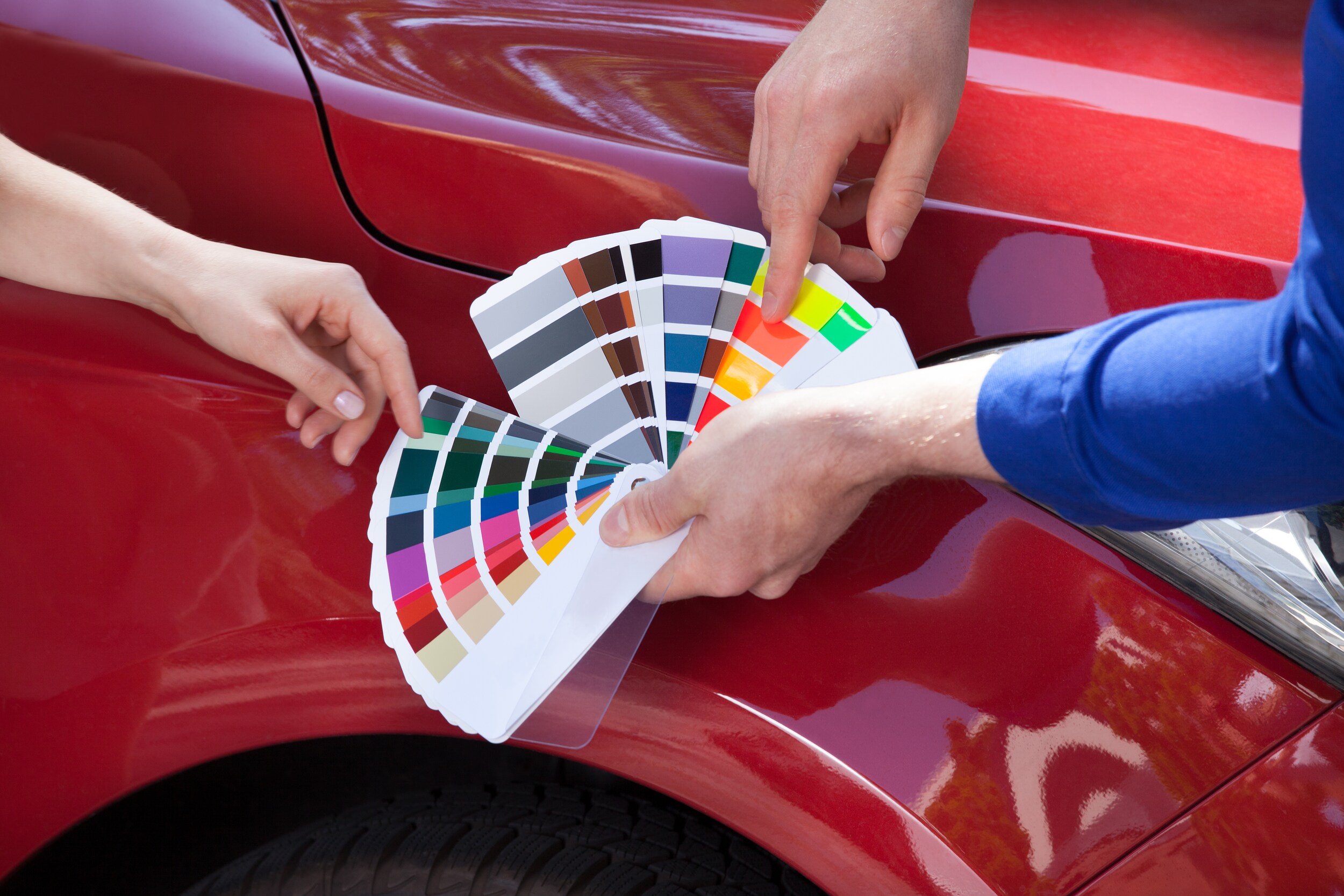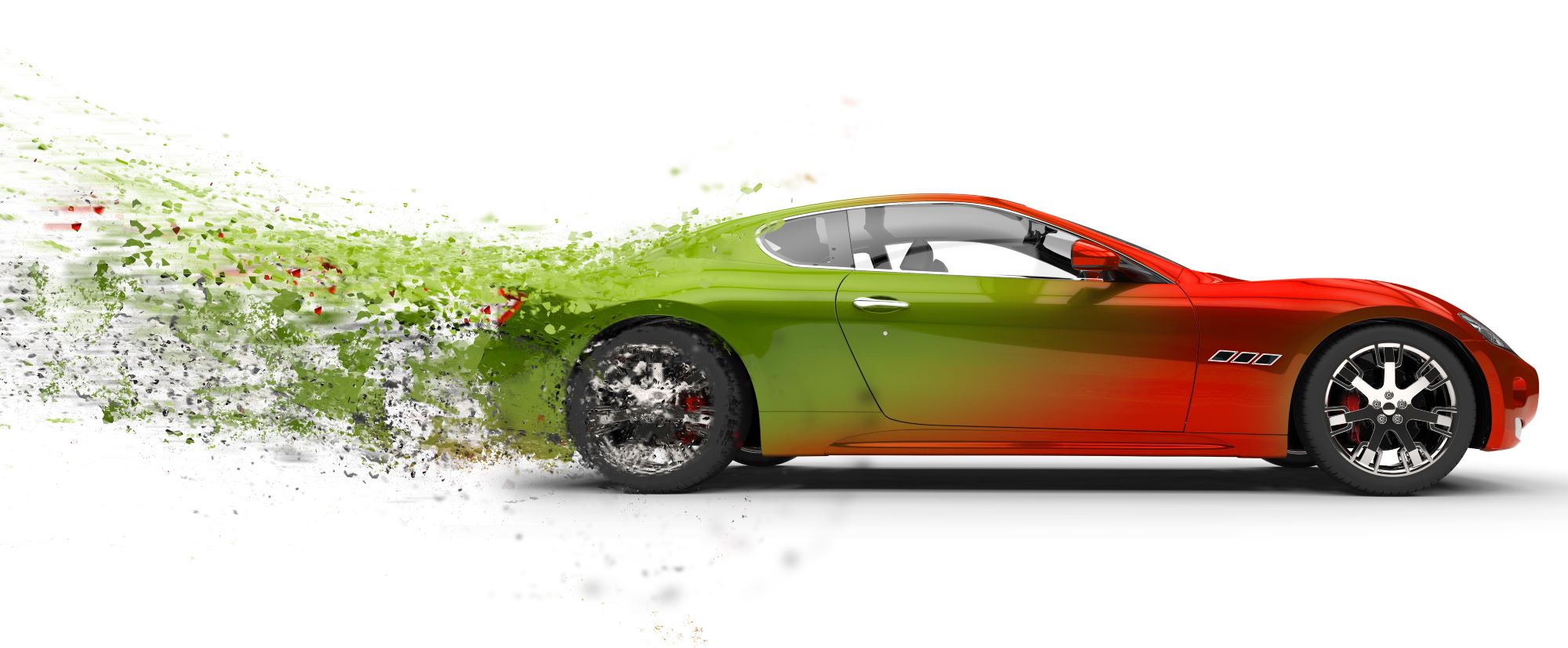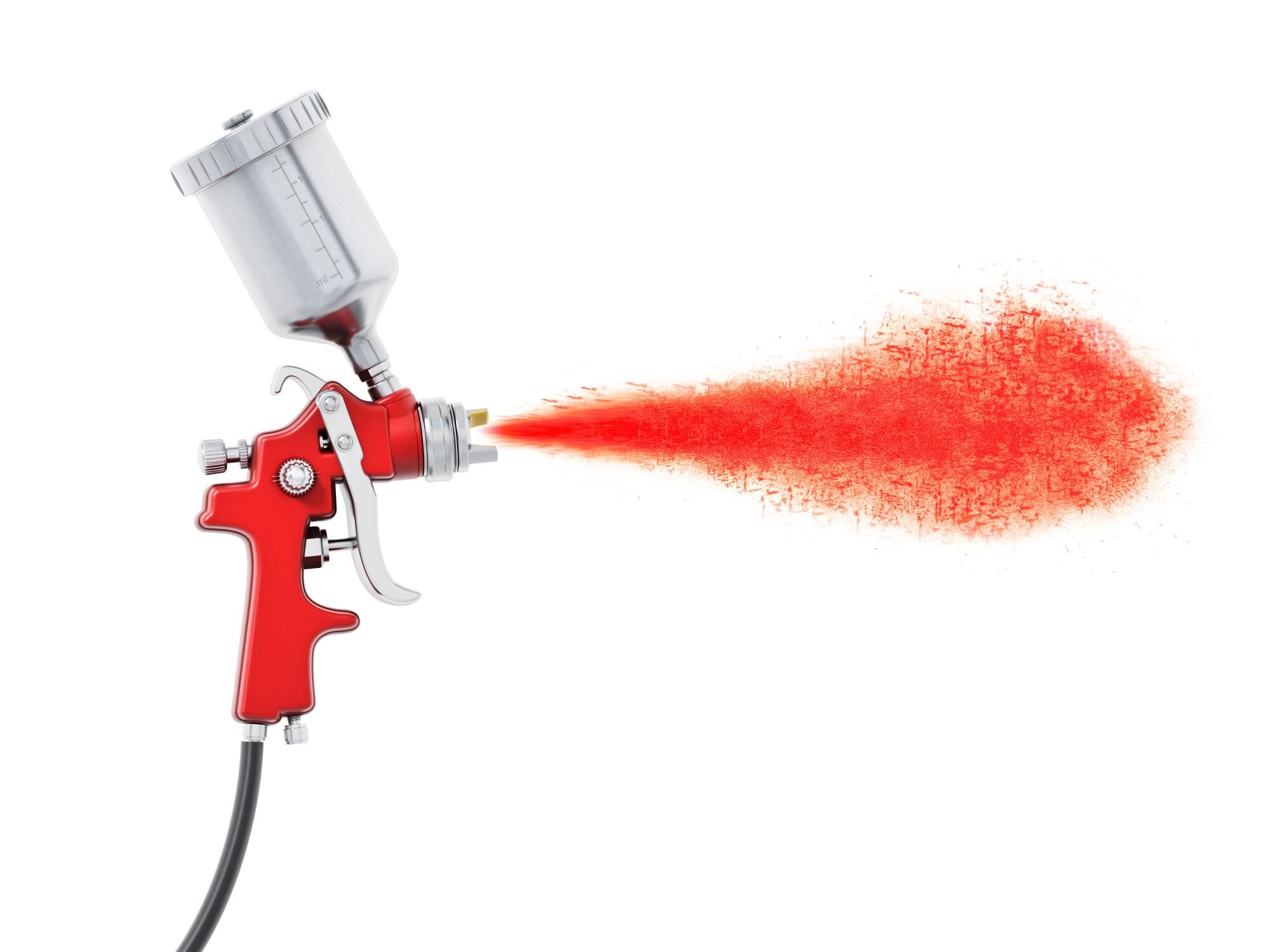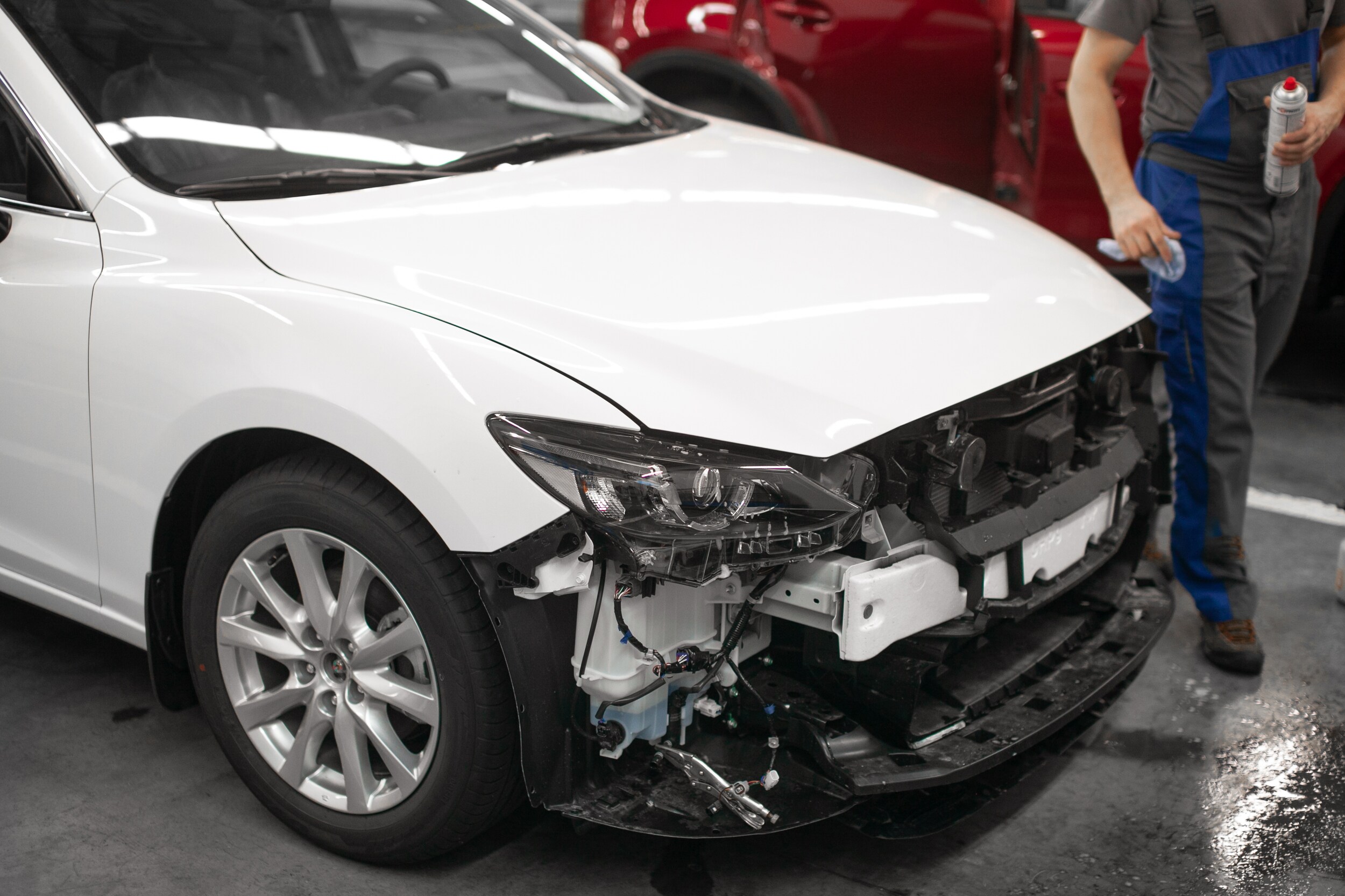How Much Does It Cost To Paint A Car?

Are you ready to take your car from drab to fab?
Painting your car can be an expensive endeavor, but the results can be stunning!
From prepping and painting to any finishing touches, you’ll need to know how much it costs before you get started.
In this article, we explore all the costs associated with painting a car so that you’re prepared for whatever comes your way. From a basic paint job or coverup to a completely new paint job, we've got the all the insight, tips, and tricks you need to get the best price for you custom paint job.

What Are The Factors That Affect the Cost of A Paint Job?
The price tag of giving your ride a fresh coat of color can vary greatly depending on several factors. The most important factor is the level of quality you are expecting from your paint job.
Standard paint job: The usual costs range for a paint job ranges frim $1,000 to $4,500. The cost of a good paint job usually includes sanding the body and removing rust before painting to get an attractive finish. Your paint job costs may vary depending on the paint shop or body shop you choose to visit. The finished product should come out close to showroom quality.
Professional paint jobs: For a high quality paint job, cist upwards of $4,500 to $10,000. The higher price range is where you will find metal flake, multi-colored, and custom paint jobs. A higher quality paint job will always cost more due to the increased prep work, and other factors.
DIY Painting: If you are looking to save money, you can always paint your own car. This can mean adding a few racing stripes, or a new coat of paint. Painting your car by yourself is perfect if you are on a tight budget, on average is going to cost upwards of $300 to $1,000 dollars. Just make sure you are in a well ventilated area when applying car paint.
Cost estimates for painting a car depend on the type and quality of paint used, as well as your vehicle size and condition of the vehicle. The average sized sedan will be a lot cheaper to paint when compared to a large SUV, but that is only one of many factors impacting cost. There is a big difference between covering up faded spots and trying to correct deep scratches in your paint. If you are pricing out the cost of custom paint jobs, or high quality paint jobs you can expect to pay more for paint services. If you are just getting your car painted
Different types of paint have different costs associated with them, ranging from basic enamel to more expensive urethane paints.

What Are The Different types of paint?
Synthetic enamel paint
High Gloss
Acrylic Enamel
Acrylic Lacquer
Acrylic Urethane
What Are The different types of paint Finishes?
Solid Paint
Metallic Paint
Pearlescent Paint
Matte Paint
How Do All Of These Factors Impact The Cost Of My Paint Job?
The cost also depends on how much labor is required to prepare the surface before painting, such as sanding or removing rust spots.
Additionally, if you're looking for custom designs or graphics, this will add to the overall cost.
All these factors should be taken into consideration when estimating how much it will cost to paint your car.
What Is The Average Cost of A Professional Paint Job?
Astonishingly, it takes an arm and a leg to get your ride painted! The cost of having your car professionally painted can vary significantly depending on the type and quality of the paint used. Different types of paint have different costs associated with them, so doing a cost comparison before choosing a type is important.
Additionally, using higher-end paints will naturally be more expensive than budget-friendly options. On average, you can expect to pay between $4,500 and $10,000 for professional painting services that include prepping the bodywork and applying two coats of paint. However, this price range could be much higher if you decide to go with specialty colors or finishes.
What Is The Preparation Work For Applying A New Paint Job?
Before you begin the process of painting your car, it's important to understand that preparation work is key.
Disassembling the vehicle includes removing all trim pieces, handles, mirrors, and any other non-painted parts.
Sanding and priming is essential to ensure a lasting paint job - don't skip this step!

Disassembling the Vehicle
Your car will need to be disassembled piece by piece, like pulling petals off a daisy. This process requires a professional touch as it can be quite time-consuming and complex.
Taking apart a car to paint it will involve removing the interior components, such as seats, carpets, door panels, and trim. The exterior components may also need to be removed before painting can begin.
A professional will document every item that is taken apart so that you have an accurate cost analysis for reassembly. Depending on the complexity of the job, it might even be necessary to remove some of the car body panels to allow the painter to do their job properly.
In any case, having a professional help with this part of the job will ensure that all components are taken off safely and correctly replaced when finished.
Sanding and Priming
After disassembling the vehicle, sanding and priming are the next steps to get it ready for painting.
Before applying primer, all rust should be removed from the surface of the body panels. This will ensure that the paint job lasts longer and looks better.
Once this is done, a 120-grit sandpaper is used to lightly sand any remaining dirt or oxidation off of each body panel.
Primer is usually applied with a spray gun in thin coats to ensure proper drying time and paint quality. Make sure to allow enough time between coats so that each coat can dry completely.
Finally, a 320-grit sandpaper to lightly sand the primer coat before applying color coats of paint.
Painting Process
Once the sanding and priming is complete, the actual painting process begins.
The professionals will use custom colors and quality materials to ensure a flawless finish. Professional services are necessary when it comes to painting a car since they have the tools and expertise to make sure the job is done right.
After the paint has been applied, the pros will then apply several layers of clear coat for added protection and shine. Painting your car with professional help can be expensive, but it's worth it in order to get the best possible results.
Finishing Touches
Now that the hard part of the painting process is complete, it's time to focus on the finishing touches. Choosing colors and paint types can be difficult and shouldn't be taken lightly.
It's important to consider what type of finish you'd like for your car, as well as any color combinations that suit your style. This will usually be decided when consulting with a professional painter.
Frequently Asked Questions
How long does it take to do a basic paint job on a car?
Painting a car doesn't have to be a difficult or expensive task. Depending on how much surface preparation and cleaning you choose to do, it can take anywhere from one day to several days.
First, make sure the car's surface is prepped correctly by washing and sanding any rust or peeling paint. Then, apply several layers of primer, allowing each coat to dry before moving on to the next.
Finally, use a quality paint sprayer for the top coat. With careful preparation and effort, you'll get that fresh new look in no time!
What type of paint is best for a car?
Painting your car is an important decision, as the paint can affect the overall look and value of your vehicle. When choosing a type of paint for a car, it’s important to consider the surface preparation that needs to be done first and what kind of paint colors you prefer.
Generally speaking, acrylic-based paints are the best choice for cars because they're easy to apply and come in a variety of colors. They provide a good finish with excellent durability, making them ideal for automotive painting projects.
So, if you're planning to paint your car, consider using acrylic-based paints for a long-lasting, beautiful finish.
Can I paint my car at home?
Painting your car at home is a project that can be done on your own with the right supplies and preparation.
There are DIY kits available that come with all of the necessary materials for painting your car, including paint, primer, sandpaper, and masking tape.
Additionally, there are several steps in preparation before you begin to paint, such as cleaning the surface of the car and taping off areas that you don't want to get paint on.
With patience and careful attention to detail, painting your car yourself can save you money while still providing excellent results.
How do I know when the paint is completely dry?
Painting your car can be a daunting task, but it doesn't have to be. Picture yourself like an artist with their canvas - you're working to create something beautiful!
To ensure success, make sure the paint is completely dry before moving on. Use a temperature gun to measure the surface of the paint and look for any spots that feel cooler than other areas.
The color should also match perfectly - if not, keep layering until you get it right. Your hard work will pay off in the end when you have a car that looks as good as new!
Are there any special tools or techniques required to paint a car?
Painting a car can be a daunting task, but it doesn't have to be! It's important to prepare the vehicle and do your research in order to get the best results.
Special tools such as masking tape, primer, spray guns, and air compressors may be needed in order to properly paint your car. Additionally, you should factor in the cost of supplies when determining how much painting a car will cost.
Make sure you understand all of the preparation steps before you begin so that you know exactly what you're getting into!
How can I protect my new paint job?
Ceramic coating
Conclusion
Painting a car can be expensive, but it doesn’t have to break the bank. By understanding the factors that affect the cost, such as preparation work and finishing touches, you can get a better idea of what it will cost to get your vehicle looking brand new again.
And if you take advantage of modern technology like virtual reality simulation, you can save yourself time and money in the long run. So don’t let painting your car be a daunting task. With the right know-how and tools, you can make it happen!